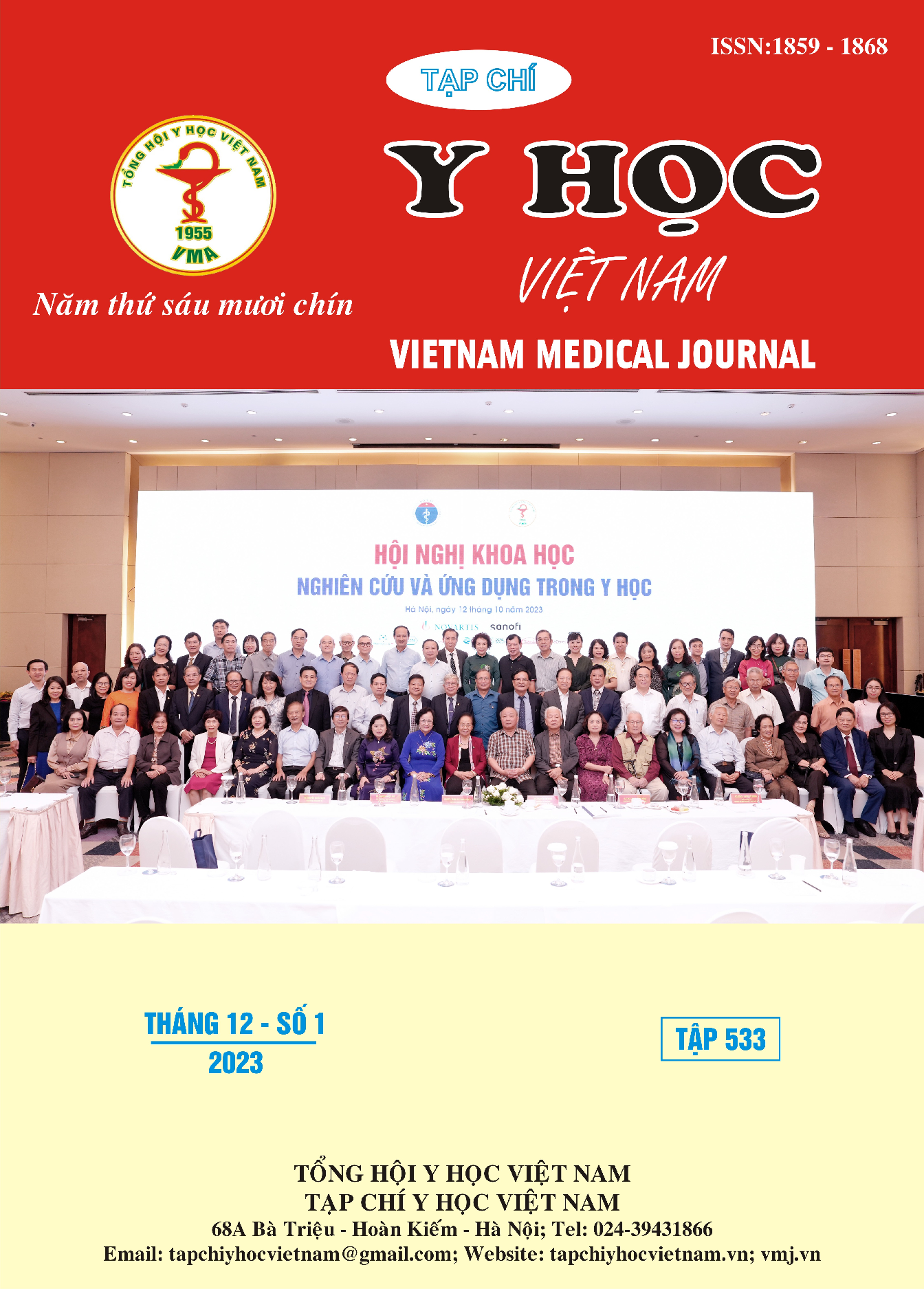COMPLICATIONS OF THERAPEUTIC HYPOTHERMIA IN PATIENTS WITH CARDIAC ARREST DUE TO CARDIOVASCULAR CAUSES
Main Article Content
Abstract
Target: The study was conducted to assess the complications of hypothermia therapy in patients with cardiac arrest as the underlying cause. Methods: This cross-sectional retrospective study reviewed the medical records of a total of 35 patients who experienced cardiac arrest due to cardiac causes from May 2015 to December 2018. Results: Patients who underwent hypothermia therapy experienced the following complications: 100% had shivering, 5,7% had seizures, and 14,3% had clinical bleeding complications. Serum potassium levels increased from 3,4 ± 0,5 mmol/L at admission to 4,7 ± 0,9 mmol/L during the rewarming phase and decreased to 4,4 ± 1,0 mmol/L after hypothermia therapy. Platelet count at admission was 266 ± 61 (g/L) and decreased to 150 ± 60 (g/L) after hypothermia therapy (p < 0,05). Ventricular arrhythmias occurred in 2,9% of patients. Ventilator-associated pneumonia was observed in 51,4% of patients. Conclusion: Shivering, coagulation disturbances, and infectious complications are common in patients with cardiac arrest after hypothermia therapy. Close monitoring, timely detection, and management of complications are essential during the implementation of hypothermia therapy
Article Details
Keywords
hypothermia therapy, cardiac arrest, cardiac causes, complications.
References
2. Nielsen N., Hovdenes J., Nilsson F., et al. (2009). Outcome, timing and adverse events in therapeutic hypothermia after out-of-hospital cardiac arrest. Acta Anaesthesiol Scand, 53(7), 926–934.
3. Lee B.K., Park K.N., Kang G.H., et al. (2014). Outcome and current status of therapeutic hypothermia after out-of-hospital cardiac arrest in Korea using data from the Korea Hypothermia Network registry. Clin Exp Emerg Med, 1(1), 19–27.
4. Andersen L.W., Holmberg M.J., Berg K.M., et al. (2019). In-Hospital Cardiac Arrest. JAMA, 321(12), 1200–1210.
5. Nguyễn Tuấn Đạt, Nguyễn Văn Chi, Hà Trần Hưng, et al. (2022). Nhận xét một số biến chứng của phương pháp hạ thân nhiệt chỉ huy với đích 33°C trong điều trị bệnh nhân hôn mê sau ngừng tuần hoàn. Tạp Chí Y Học Việt Nam, 516(1), 152–155.
6. Knight W.A., Hart K.W., Adeoye O.M., et al. (2013). The incidence of seizures in patients undergoing therapeutic hypothermia after resuscitation from cardiac arrest. Epilepsy Res, 106(3), 396–402.
7. Lundbye J.B., Rai M., Ramu B., et al. (2012). Therapeutic hypothermia is associated with improved neurologic outcome and survival in cardiac arrest survivors of non-shockable rhythms. Resuscitation, 83(2), 202–207.
8. Kirkegaard H., Søreide E., de Haas I., et al. (2017). Targeted Temperature Management for 48 vs 24 Hours and Neurologic Outcome After Out-of-Hospital Cardiac Arrest. JAMA, 318(4), 341–350.


